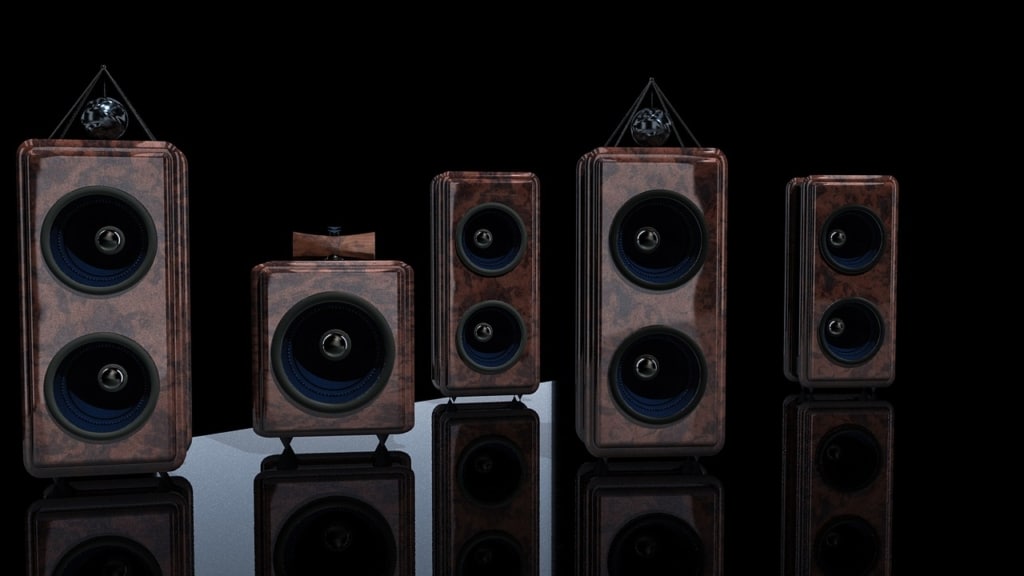
HD Audio FAQ
From the first multi-channel sound format to today's standards, such as DTS–HD Master, the questions are piling up, since the technology is known to be not quite as easy to understand as the good old ones stereo-Reproduction. For this reason offers HiFi–Online.net gives you the ten most frequently asked questions and answers about high-resolution, digital sound formats.
Contents
1. What multi-channel sound formats actually exist?
In addition to the somewhat older Super Audio CDs (SACDs), there are DVD–Audio (DVD–A) and DVDs based on DTS formats. Furthermore, multi-channel music recordings in Dolby Digital formats, such as Dolby True-HD, are already established on the market and deliver the corresponding high-resolution sound for the high-resolution images of the Blu-Ray.
2. What is the SACD all about?
The SACD is a music recording and playback system developed jointly by Sony and Philips as a potential successor to the CD was developed. SACDs operate at a sampling rate of 2,8224 MHz, ie 64 times that of a CD, and have a frequency range of 100 kHz and a dynamic range of 120 dB. An advantage over the CD is the 6 times higher storage capacity, which means that more music fits on a "disc". If you play SACDs on normal CD players, you have that Klang only in conventional CD quality. To the existing one Copy protection To avoid this, you need a corresponding, certified SACD player.
3. What is the DVD-A all about?
A DVD–A is a modification of the actual DVD and can therefore also contain still images and video sequences. But if that were the case, the DVD-A would only provide a bandwidth of 6,144 MB/s for audio information, which would then turn it back into a conventional movie DVD. However, since this is a pure music DVD and no film material is available, the bandwidth for audio information increases to 9,8 MB/s! This music can then be played via the CD-compatible, two-channel PCMformat as well as a lossless MLP format (Meridian Lossless Packaging) specially developed by Dolby as 5.1 sound. Furthermore, the DVD-A offers a sampling frequency of 96 kHz and a 256-fold higher one quantization, which indicates how many different digital values an analog Signal converts. But just as with the SACD, a special DVD-A player is also required here.
4. What do I need now to play SACDs or DVD-A?
First and foremost the already mentioned player. This should offer an integrated decoder for the MLP and SACD format, which the channels individually and analogously to a Receiver forwards, which must have a 5.1 input. If it is only a stereo receiver, a conventional stereo signal is reproduced - and that's not the point! More expensive devices offer a completely digital interface for the unadulterated transmission of signals - but this must be encrypted and certified by the licensors!
5. What are the pros and cons of using DTS music DVDs?
The great advantage of these discs is the high level of compatibility with home cinema systems. Almost every AV receiver and DVD player has an integrated DTS decoder - so you can play the disc immediately! The disadvantage, however, is that the playback is multi-channel, but the quality is not higher than that of MLP and SACD!
6. What's with the analogue signal transfer?
The reason for this crutch was the music industry's concern about the perfect digital copy of an illegal origin. However, after some time there was a fully digital solution: i.Link! i.Link is an interface developed by Apple, also known as Firewire is known! Furthermore, there is a so-called proprietary connection that transmits the unadulterated digital signal to the receiver completely unencrypted! In addition to the signal problem, the analogue solution is also annoying because of the double work involved in programming the internal decoder to the loudspeaker configuration. With digital transmission, only the AV receiver has to take care of this.
7. What is the perfect speaker setup for multi-channel playback?
For multi-channelTon according to the SACD standard, all five Loudspeakers of a home theater system should be placed in a circle around the listening position and pointed directly at the listener. The Subwoofer on the other hand, it can be placed largely freely, since the human ear cannot locate the low frequencies.
8. Doesn't that contradict the correct Dolby Digital lineup?
That's quite possible! The surround speakers in particular are in different positions here. For this reason, some receiver manufacturers offer to buy a second pair of surround speakers, the so-called B surrounds.
9. Are dipole surround speakers actually suitable for multi-channel playback?
In most cases not. Is there a possibility of them on a direct radiatorHowever, it is possible to switch operations. Otherwise, a second pair of speakers only has to be purchased for music use.
10. Is bi-wiring suitable for frequent music listening?
Bi-wiring works well. In contrast to film sound, in which many noises are constantly superimposed, the ear breaks down the frequency ranges much more clearly when listening to music in stereo mode. The signal distortions that occur in the low-frequency range via inductive effects in the cable are therefore more pronounced. Music often differs in the quality of the Loudspeakers the men from the boys!

